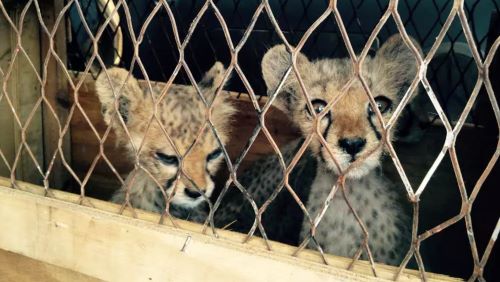

Ultimately, the question we face is not whether people should own exotic pets, but whether the cost of doing so can be justified in an age of rapid ecological change.

By Matthew A. McIntosh
Public Historian
Brewminate
Beneath the Surface of a Global Market
In the corner of a suburban living room, a vibrant green parrot mimics human voices with uncanny accuracy. In a college dorm, a tarantula rests in a plastic terrarium, silent and still. Online, exotic pet marketplaces advertise ball pythons, sugar gliders, servals, and even baby crocodilians, each priced and packaged as if nature could be parcelled and shipped like shoes.
To most buyers, these animals are companions or curiosities. But far beyond the walls of private homes, the trade in exotic pets has become a powerful engine of ecological upheaval.
Often overlooked in discussions of environmental risk, the exotic pet trade plays a significant role in the spread of invasive species. Across continents and ecosystems, non-native animals, released intentionally or by accident, are taking root in landscapes that never evolved to receive them. The results are sometimes strange, sometimes devastating, and almost always irreversible.
From Captivity to Colonization
Not all exotic pets become invasive. Many perish within weeks of escape or release, unable to cope with unfamiliar climates or find suitable food. But some adapt with surprising speed, exploiting gaps in local food webs and facing little resistance from predators that do not recognize them as threats.
Take the Burmese python, once a novelty in the American pet trade. Imported from Southeast Asia in the thousands during the 1980s and 1990s, the species found its way into the wilds of South Florida. Some were released by overwhelmed owners. Others escaped during hurricanes or from substandard enclosures.
Today, Burmese pythons are firmly established in the Florida Everglades, where they have decimated native mammal populations. Studies by the U.S. Geological Survey have documented population declines of more than 90 percent for raccoons, opossums, and bobcats in areas where pythons are prevalent. One autopsy famously revealed a python had consumed a full-grown white-tailed deer.
The story of the python is not isolated. In Puerto Rico, the green iguana has proliferated to the point of infrastructure damage, chewing through electrical cables and destabilizing roads. In Texas, escaped Nile monitors and tegu lizards pose threats to native reptiles and ground-nesting birds. In Europe, red-eared sliders, discarded by owners when they outgrow their cuteness, outcompete native pond turtles, disrupting delicate freshwater ecosystems.
A Problem with Global Roots
The global trade in exotic animals is vast and poorly regulated. The wildlife trade exceeds $20 billion annually. The pet sector accounts for a significant portion of that figure, with millions of animals crossing borders each year. From Amazonian parrots to Madagascan chameleons, the reach of this commerce spans every continent and taps into both legal and illegal supply chains.
Online marketplaces and social media platforms have only accelerated the pace. Rare species are now just a few clicks away, often marketed without disclosure of ecological risks or long-term care requirements. Enforcement remains inconsistent, with customs inspections uneven and penalties for violations minimal in many countries.
While the Convention on International Trade in Endangered Species of Wild Fauna and Flora (CITES) provides a framework for regulating cross-border trade, it does not address the ecological impacts that arise after animals are purchased. The problem is compounded by patchwork national laws and a lack of coordination between animal welfare agencies and environmental regulators.
Human Habits, Unnatural Consequences
The motivations behind exotic pet ownership are varied. Some people are drawn to the uniqueness of owning a rare or unusual animal. Others view their pets as symbols of status or expressions of personal identity. For many, there is a genuine affection and a desire to connect with nature more intimately than cats and dogs allow.
But the line between affection and abandonment is often thin.
When animals grow larger, louder, or more aggressive than expected, owners may panic. Release into the wild can seem like a humane option, even an act of compassion. The ethical dissonance is rarely accompanied by ecological understanding.
Invasive species are not simply out-of-place organisms. They are stressors that disrupt the evolutionary balance of their new environments. They outcompete native species for food and shelter. They bring new pathogens or act as novel predators. They can permanently alter habitat structures, often in subtle but cascading ways.
In Florida, the lionfish, originally an ornamental aquarium species, has now colonized coral reefs throughout the western Atlantic. With few natural predators in its new range and a voracious appetite, it consumes juvenile reef fish at a rate that threatens fisheries and reef resilience.
Attempts to control its spread have ranged from organized culls to “eat the enemy” campaigns promoting lionfish as a menu item. But once an invasive species becomes established in the wild, eradication is rare and expensive. Most efforts amount to containment, not reversal.
Cultural Blind Spots and Ethical Questions
The exotic pet trade also raises complex moral questions. Capturing animals from the wild for commercial sale often involves inhumane practices, high mortality rates, and the erosion of wild populations. Even when bred in captivity, many exotic pets suffer in domestic environments that cannot meet their behavioral and physiological needs.
Yet public awareness remains limited. Pet stores often portray these animals as easy to care for, and marketing materials rarely mention their ecological or welfare implications. Regulatory agencies are often siloed. Veterinary boards, wildlife services, and customs departments operate in parallel rather than in coordination.
Some countries have begun to implement restrictions. Australia maintains one of the strictest biosecurity regimes in the world, banning many exotic species outright. The European Union has developed a list of “species of Union concern,” restricting ownership, sale, and breeding. In the United States, progress has been slower and more fragmented, with state-level laws varying widely and federal oversight limited primarily to endangered species and interstate transport.
Still, no regulatory structure can fully compensate for cultural normalization. As long as exotic pet ownership is marketed as harmless, even trendy, the ecological risks will continue to spread beneath the surface.
What Can Be Done
Solutions will require more than bans. They will demand a shift in cultural values, greater public education, and a unified global strategy that views the pet trade not only as a matter of commerce or animal rights but as a frontline issue in environmental protection.
Some scientists have called for a “white list” approach, where only species proven to be non-invasive and suited for captivity are permitted for trade. Others advocate for public buyback programs, surrender amnesties, and better investment in exotic animal sanctuaries to discourage release into the wild.
Ultimately, the question we face is not whether people should own exotic pets, but whether the cost of doing so can be justified in an age of rapid ecological change. In a world already teetering under climate disruption and biodiversity collapse, the quiet reshuffling of species boundaries through pet ownership may seem trivial. But history teaches us that ecological harm often begins not with cataclysm, but with carelessness. What starts in a terrarium or a backyard cage can end in an ecosystem forever changed. The silence that follows may not be just the absence of birdsong, but the erasure of balance itself.
Originally published by Brewminate, 08.04.2025, under the terms of a Creative Commons Attribution-NonCommercial-NoDerivatives 4.0 International license.


